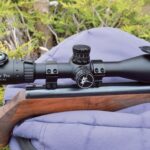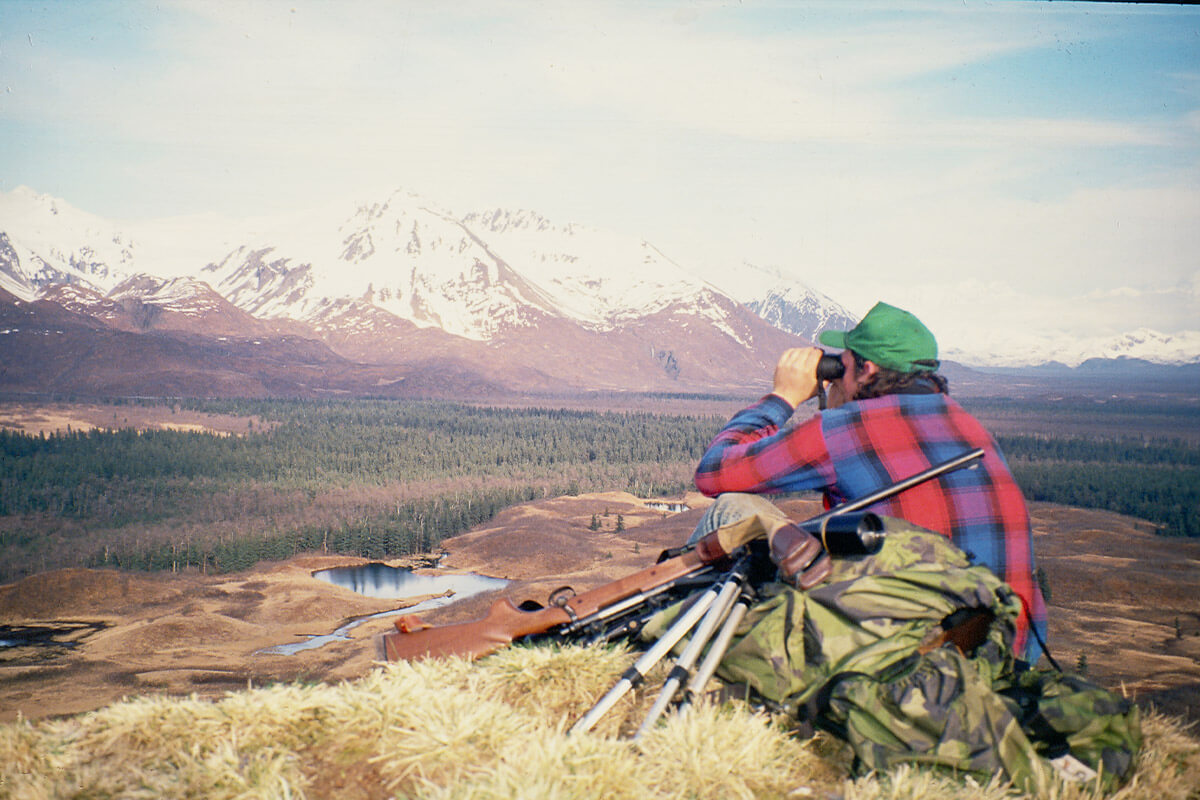
Good brown bear country in Southeast Alaska. Always, the terrain and the bear dictate the shot. Despite best intentions, the country is often tough and you can’t always get as close as you’d like. (RifleShooter photo)
Robert E. “Pete” Petersen took a huge polar bear with a .44 Remington Magnum in his S&W M29. It’s said he was the first, but he certainly wasn’t the last to take a big bear with a handgun. My son-in-law, Brad Jannenga, took a monstrous Alaskan brownie…with a big broadhead. One arrow, one bear. Not the first, nor the last. Yes, you can.
To seek our big bears (grizzly, Alaskan brown, polar) is a major undertaking. If you don’t live where they are hunted, you will be accompanied by a licensed guide. Outfitting fees are steep and you must plan ahead and hunt your bear at a certain time and place, no matter if the weather cooperates. If you live near the great bears, then you have the luxury of biding your time, but you still have serious logistical hurdles: Horses, water craft, snow machines, light aircraft.
If you’re knee-deep into a certain method of take, you should use the equipment that gives you the most satisfaction…accepting the limitations. However, most “big bears” are taken with centerfire rifles, the most effective tool. Conveniently, for this discussion, most folks reading this are rifle shooters! The goal is to take the best bear you can find in the time available. Today, for many, it will be just one big bear in a lifetime…seems prudent to use the best tool possible!

Table of Contents
Order of Magnitude
Compared to Africa and Asia, North America was cheated of dangerous game. We have our big bears and, well, we have our big bears. I have healthy respect for all black bears, and an outsized black bear can be as big as the average grizzly, a quarter ton and more. With black bears, it’s wise to be armed for the largest bear possible, the kind of bear we hope to encounter.
Our great bears are a whole different order of magnitude. Grizzly bears pick up where black bears stop. Size is limited by growing season (length of hibernation) and food sources. Interior grizzlies can reach 800 pounds and a half-ton is not impossible. With high-protein salmon diet and warm Japanese currents, coastal brown bears start where interior grizzlies leave off. Fall weights are much heavier than spring weights. Almost no big bears are accurately weighed, so everything is just a guess. I have seen many African buffaloes on the ground, a few on scales. A big Cape buffalo bull weighs around 1500 pounds, three-quarters ton. Few bears attain such weight, but I have seen Alaskan brown bears that are “as big as a buffalo”…and as difficult to roll over!
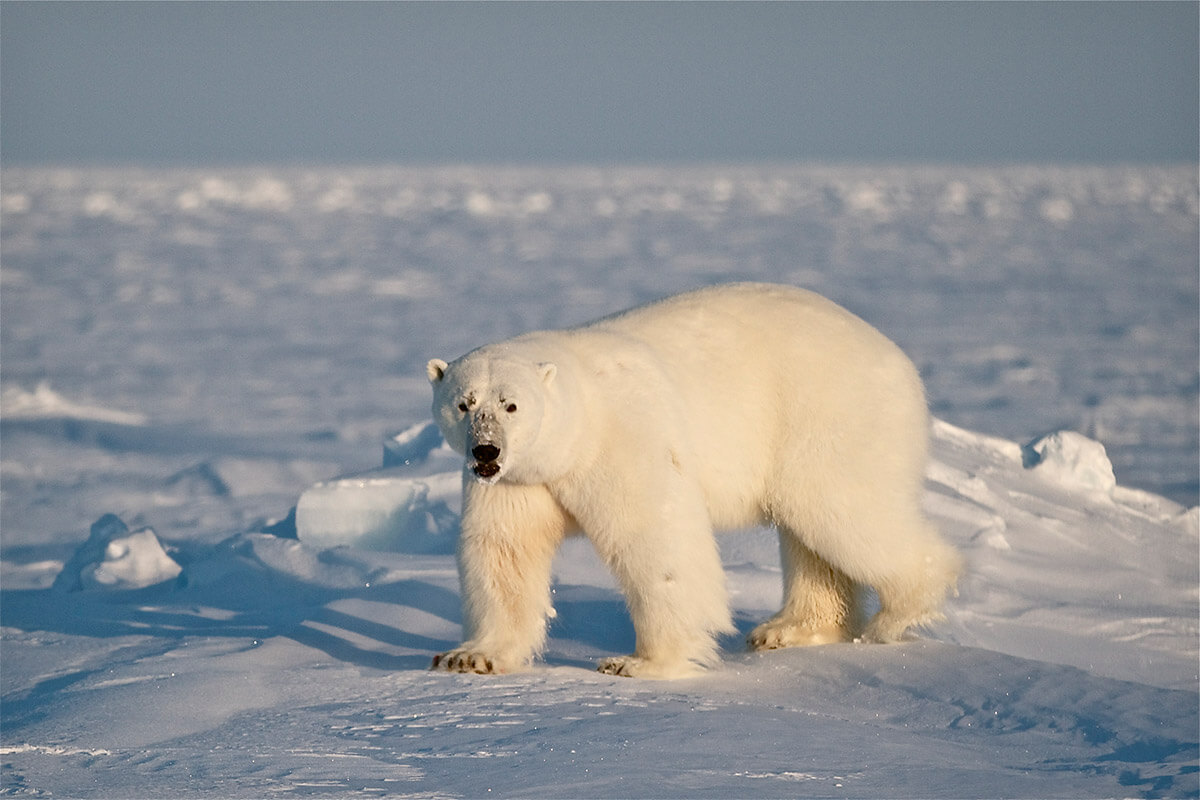
It is often argued which is larger, the coastal brown or polar bear. Paw size is much the same (tracks used to suggest size). The polar bear is longer and rangier; the brown bear is blockier, with the largest specimens of both species similar in overall size and weight. Take your pick, they are the two largest extant predators, awesome and fearsome creatures. When I think of best rifles for the biggest bears, the corollary continues: I think of buffalo rifles!
Guide Gun or Bear Gun?
Robert Ruark took his .470 double on his Alaska brown bear hunt, and some Alaskan guides carry big doubles. Forty years have passed since I shot my only Alaskan brown bear. Chances of seeing a bigger bear are almost nil, but that’s a hunting experience I’d like to repeat. If I do another coastal brown bear hunt I might do it with a double rifle. With reservations: Wet, blustery, salt-air climate is a poor place for a nice double. And: Sights are a limitation. So, maybe, but romantic notions aside, a double may not be an ideal tool.
Perhaps similarly, these days big lever-actions are “in.” In their latter days, Marlin was selling .45-70 lever-actions more than three-to-one over .30-30s. The first new Marlin under Ruger ownership is an 1895 .45-70, in stainless and synthetic, with ghost-ring aperture and a Picatinny rail strip. This configuration defines what we call a “guide gun.”
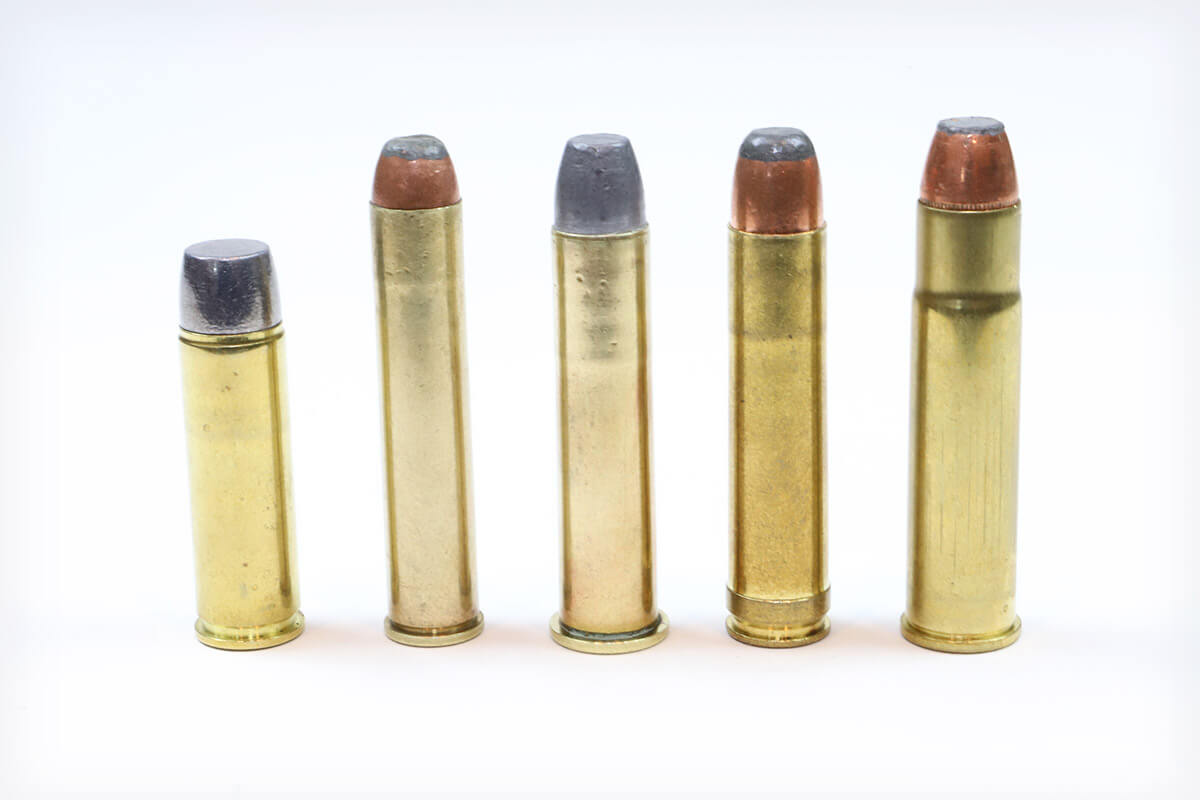
The Marlin isn’t alone. Henry is selling the heck out of their big .45-70. Although numbers are smaller, Big Horn Armory is doing well with their lever-action carbines in the .460 and .500 S&W cartridges. Doug Turnbull is back-ordered with his proprietary .470 and .475 Turnbulls, using modern actions. I predict we’ll see Ruger-Marlins in .444 and .450 Marlin, and Browning’s BLR is chambered to .450 Marlin. Our esteemed Editor, Scott Rupp, is a fan of the .444 Marlin for hunting elk in Colorado’s thick oak brush. Recently he mentioned that, if he had an opportunity to hunt brown bear, he’d like to do it with his .444.
With the right bullets and loads, especially in a carbine-length barrel, all of these cartridges are big-bear capable, certainly within 100 yards or so. Most popular is the .45-70. Loaded to trapdoor Springfield pressures, all standard .45-70 factory loads are questionable for our biggest bears. However, in a Marlin, Henry, or modern 1886 action, handloads or specialty loads from Buffalo Bore, Cor-Bon, or Garrett offer plenty of power.
Just be careful to understand the concept…and the situation. “Guide gun” implies a backup rifle that a guide might carry to dig a wounded bear out of thick alders. Many fishermen and hikers in big bear country also carry large-caliber lever-actions for bear protection. Heavier and more awkward than a big handgun, a powerful, short-lever-action trumps any handgun!
The only thing is: Guides and wilderness wanderers aren’t hunting a big bear. A firearm will only be employed to stop a wounded bear, or as a last resort if the bear is hunting you. Although usually armed, I carry (and believe in) bear spray, and hope I never have to shoot a bear just for being a bear.
Hunting a big bear is a different deal. It’s a tough hunt, often with precious time lost to bad weather. Regardless of cost, there are no guarantees. Defeat is possible; the best you can hope for is one good chance. Despite intent, terrain and the bear dictate the shot. Nobody takes a long shot at a big bear, but a hunt can come down to a 200-yard shot at a brown bear prowling a wide-open beach, or a polar bear approaching an open lead.
Priority of equipment is a personal preference. Bowhunters make this choice: Close shot or nothing. I submit that hunters who choose big lever-actions are similarly restricting the potential shots they might take.
With heavy-for-caliber 220-grain bullets, the .30-06 probably accounted for more big bears than any other single cartridge. It would still do the job, but Winchester’s 1937 adoption of the .375 H&H in their new Model 70 changed the game. The .375 is the versatility king, powerful enough—and fast enough—for almost anything. Although perfect for few animals, the .375 is awesome for the biggest bears!
The .375 remains the primary recommendation among big bear guides. It doesn’t have to be an H&H; I used a .375 H&H for my Alaskan brown bear, a .375 Ruger for my polar bear. Pick your case dimensions; a .375 will do the job.
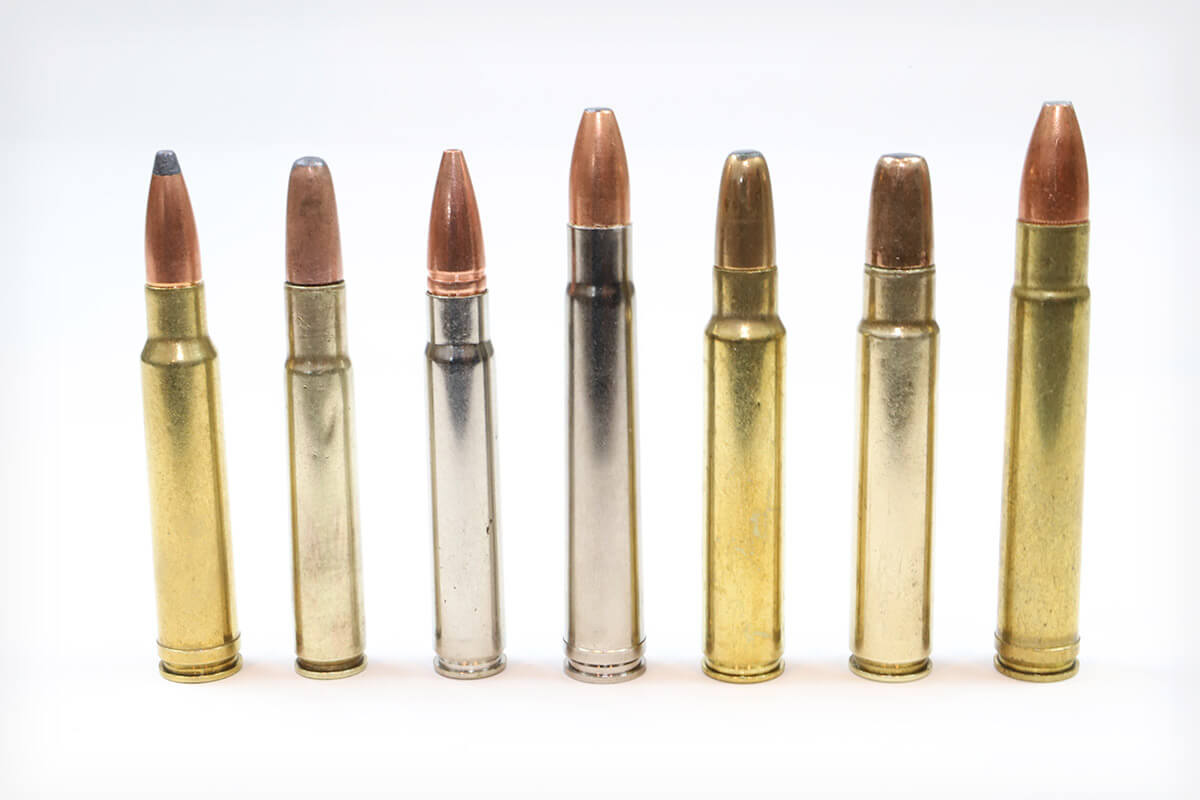
It is not the only choice, but something over .30 is called for. Not all Alaskan guides agree, but I’m comfortable with a.33 and a bullet of 250 grains or more. My Kamchatka brown bear held the world record (by skull measurement) for years, cleanly taken with a single 250-grain Nosler Partition from a .340 Weatherby Magnum. Wife Donna’s big Alaskan brown bear dropped to a single Interbond from a .338 Winchester Magnum.
For a minimalist, light-recoil approach, I’d be fairly comfortable with a .35 Whelen or .350 Remington Magnum with 250-grain bullets. Certainly, the 9.3×62 with 286-grain bullets would be fine. Or, go heavier and don’t be embarrassed! Our big bears are solidly into .416 territory! As with buffalo, with more frontal area, bullet weight, and energy than a .375, the .416s are more dramatic in effect, and shoot plenty flat enough.
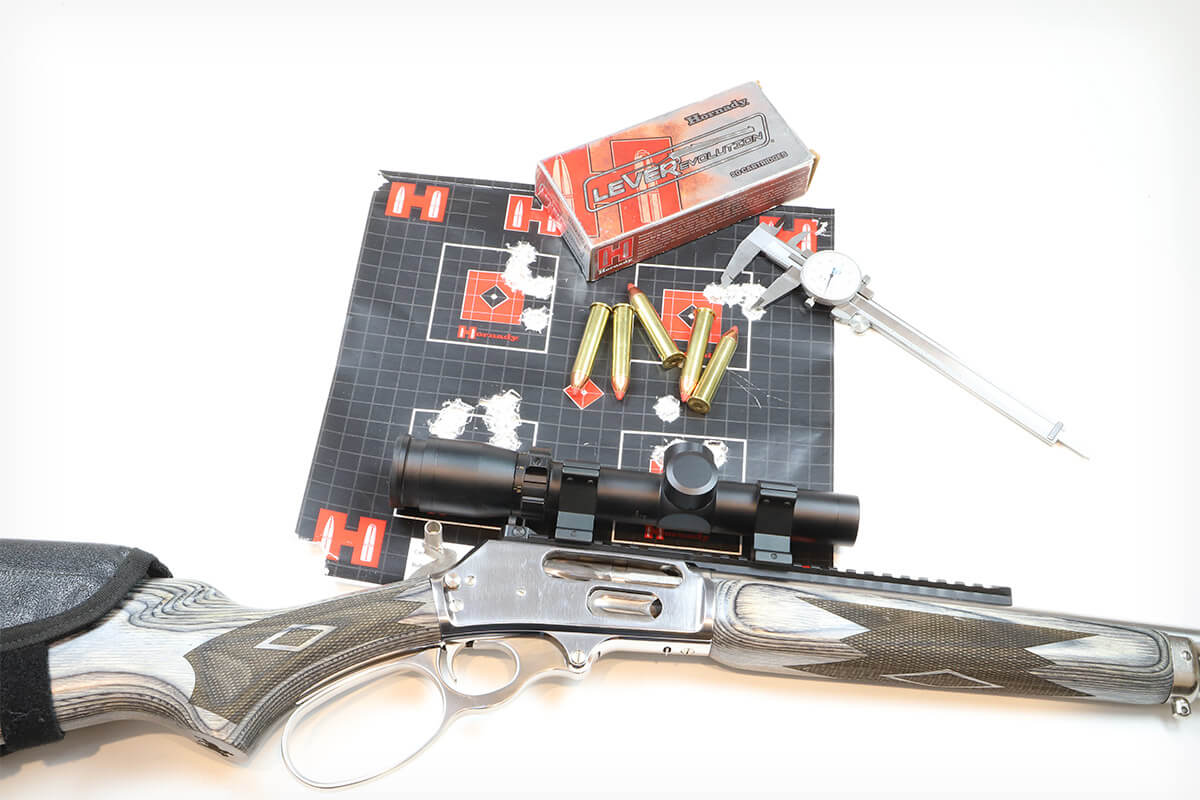
Actions and Sights
Just now, I met an Alaskan who does almost all his hunting with Ruger No. Ones. He has several in big bear chamberings and can hunt big bears annually if he chooses. I love the No. One…but I probably wouldn’t choose a single-shot for the biggest bears. They are tough; I’ve seen few one-shot kills, even if the first shot was perfectly placed. And, after all, if an animal isn’t down or doesn’t stay down, you can’t be sure! Grizzly and brown bear hunts are often windy, wet, and snowy. Polar bear hunting is miserably cold, fumbling for cartridges not good. I’m intrigued by using a double, but it has the same problem as a single-shot: Fully loaded and ready…or completely empty. A bolt-action, chambered to a versatile cartridge with a full magazine in reserve, is the most popular choice.
Sights matter. Low light situations aren’t common, although can occur in that long Arctic twilight. To hunt a big bear, I wouldn’t take a chance on iron sights, because of both light and range. Magnification isn’t important, but the greater precision of optical sights counts. I used an Aimpoint on my polar bear hunt, prepared for a last-ditch shot at a vanishing bear…but totally fine for the 40-yard shot I drew. If I did use a double, priority would go to sights, either a red-dot or low-powered scope, definitely not traditional express sights!
The same could apply to big lever-actions but, for most of us, a low-range variable or fixed low-power scope will be the most common and practical choice. A big bear is not a small target and, even in a worst-case scenario, there’s not much distance to worry about. 4X magnification is plenty, just place that first shot as well as you can…and get ready to shoot again!













































